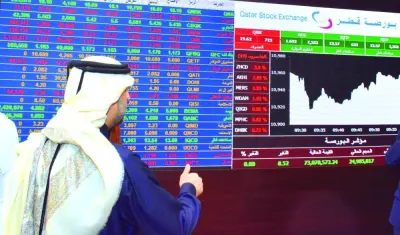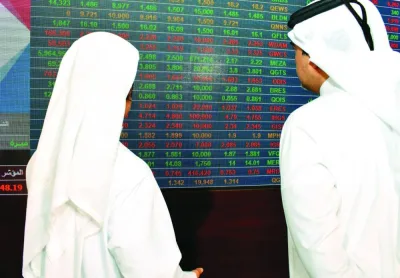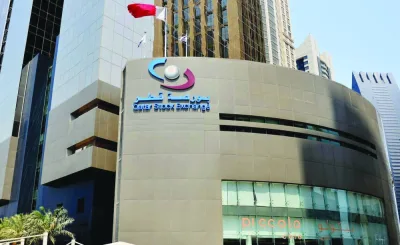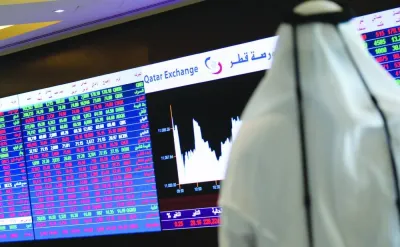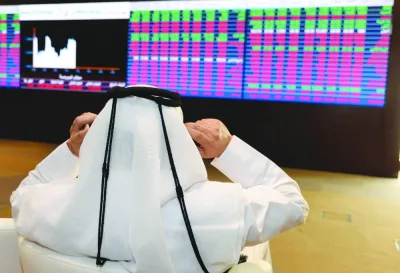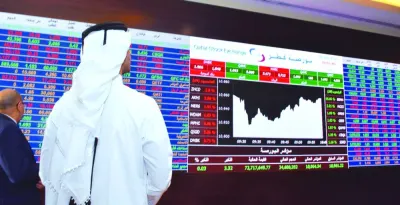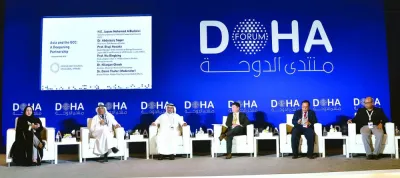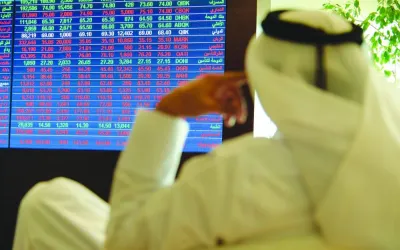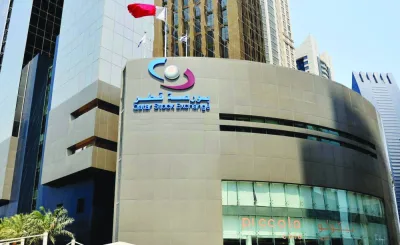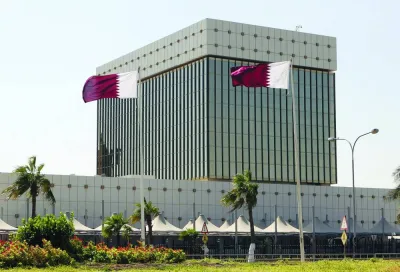High oil prices due to Red Sea tension and the softening of the tightening bias in the US rates had their reflection on the Qatar Stock Exchange (QSE), whose key index soared as.text-box { float:left; width:250px; padding:1px; border:1pt white; margin-top: 10px; margin-right: 15px; margin-bottom: 5px; margin-left: 20px;}@media only screen and (max-width: 767px) {.text-box {width: 30%;}}**media[117896]**much as 358 points and capitalisation by QR18bn this week, which however had truncated session in view of national holidays.The foreign funds were increasingly net buyers as the 20-stock Qatar Index shot up 3.6% this week which saw the Qatar Financial Centre Regulatory Authority propose update to its prudential Islamic banking regime as part of ongoing work programme to implement the Islamic Financial Services Board framework.The banking and telecom counters witnessed higher than average demand this week which saw Qatar's third financial sector strategy aims at making Doha achieve developed market status by developing a competitive and innovative capital market through deepening the financial offerings, including more equities as well as debt and environment, social and governance bonds.The domestic funds were seen increasingly into net buying this week which saw Edaa postpone the implementation of the shortened trading cycle ‘T+2” from March instead of the earlier stipulated deadline of January 2024.The Gulf institutions’ weakened net profit booking had its influence in the main bourse this week which saw Wasata Financial Services announce market making for as many as 10 listed companies from January 2024.As much as 82% of the traded constituents extended gains to investors in the main market this week which saw a total of 0.04mn Masraf Al Rayan-sponsored exchange-traded fund QATR worth QR0.09mn trade across 17 deals.However, the local retail investors were increasingly net sellers in the main bourse this week which saw this week which saw as many as 0.04mn Doha Bank-sponsored exchange-traded fund QETF valued at QR0.41mn change hands across 31 transactions.The foreign retail investors turned bearish in the main bourse this week which saw QNB Financial Services stop liquidity provider activity for Masraf Al Rayan from December 26, 2023.The Islamic index underperformed other indices in the main bourse this week which saw the banks and industrials together constitute about 55% of the total trade volume.Market capitalisation was seen adding QR18.43bn or 3.19% to QR596.75bn on the back of large and midcap segments this week, which saw no trading of sovereign bonds.Trade volumes and turnover were on the decline both in the main bourse and venture market this week, which saw no trading of treasury bills.The Total Return Index zoomed 3.6%, the All Share Index by 3.39% and the All Islamic Index by 2.79% this week.The banks and financial services sector index shot up 4.47%, telecom (4.11%), transport (2.52%), industrials (2.22%), real estate (1.69%), consumer goods (1.67%) and insurance (0.72%)The industrials sector index zoomed 1.94%, transport (1.36%) and realty (1.07%), while consumer goods and services declined 1.45%, telecom (0.63%), banks and financial services (0.27%) and insurance (0.23%) this week.Major gainers in the main market included Qatari German Medical Devices, Qatar Islamic Bank, Qamco, Nakilat, Commercial Bank, QNB, Masraf Al Rayan, Industries Qatar, Dlala, Salam International Investment, Mannai Corporation, Qatari Investors Group, Qatar Electricity and Water, Gulf International Services, Barwa, Ooredoo, Vodafone Qatar and Gulf Warehousing. In the venture market, both Al Faleh Educational Holding and Mahhar Holding saw their shares appreciate in value this week.Nevertheless, Beema, QLM, Qatar Islamic Insurance, Doha Insurance and Milaha were among the losers in the main market this week.The foreign funds’ net buying increased substantially to QR165.49mn compared to QR105.85mn the week ended December 14.The domestic institutions’ net buying grew significantly to QR31.25mn against QR11.23mn the previous week.The Gulf institutions’ net selling weakened considerably to QR73.28mn compared to QR149.66mn a week ago.However, the local retail investors’ net selling strengthened drastically to QR93.32mn against QR3.97mn the week ended December 14.The foreign individuals were net sellers to the tune of QR15.11mn compared with net buyers of QR28.96mn the previous week.The Arab individuals turned net sellers to the extent of QR13.54mn against net buyers of QR8.16mn a week ago.The Gulf retail investors’ net profit booking rose perceptibly to QR1.47mn compared to QR0.62mn the week ended December 14.The Arab institutions were net sellers to the tune of QR0.02mn against no major net exposure the previous week.The main market witnessed a 33% plunge in trade volumes to 504.4mn shares, 39% in value to QR1.6bn and deals by 26% to 56,424 this week.In the venture market, trade volumes plummeted 53% to 0.87mn equities, value by 51% to QR0.97mn and transactions by 57% to 107.

Most Read Stories
4


